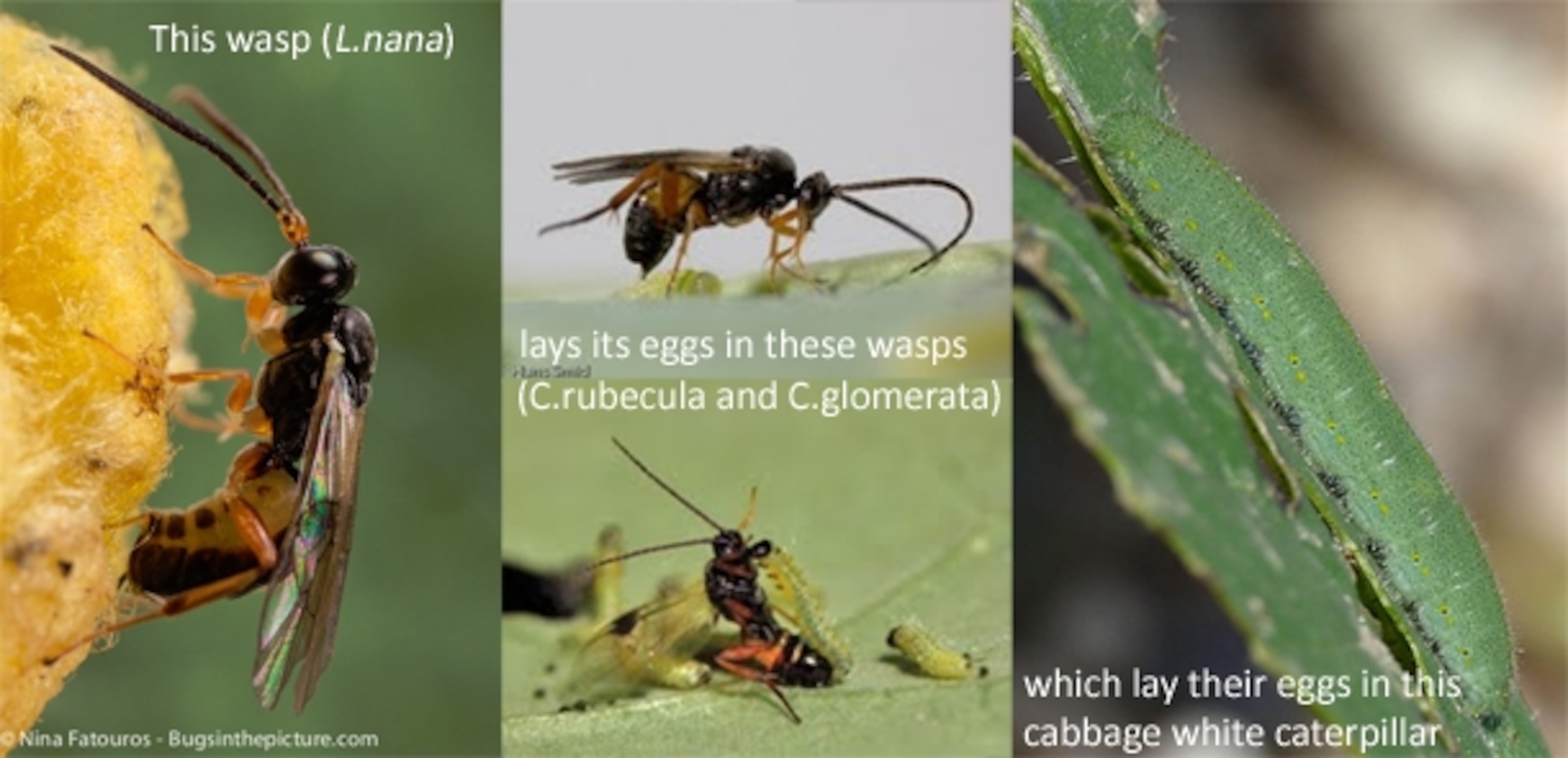
Wasps that lay eggs in wasps that lay eggs in caterpillars
(Left by Nina Fatouros, centre by Hans Smid, right by Harald Süpfle)
A very hungry caterpillar munches on a cabbage leaf and sets off an alarm. The plant releases chemicals into the air, signalling that it is under attack. This alarm is intercepted by a wasp, which stings the caterpillar and implants it with eggs. When they hatch, the larval wasps devour their host from the inside, eventually bursting out to spin cocoons and transform into adults. The cabbage (and those around it) are saved, and the wasp—known as a parasitoid because of its fatal body-snatching habits—raises the next generation.
But that’s not the whole story.
Some parasitic wasps are “hyperparasitoids”—they target other parasitoid wasps. And they also track the cabbage’s alarm chemicals, so they can find infected caterpillars. When they do, they lay their eggs on any wasp grubs or pupae that they find. Their young devour the young of the other would-be parasites, in a tiered stack of body-snatching. It’s like a cross between the films Alien and Inception.